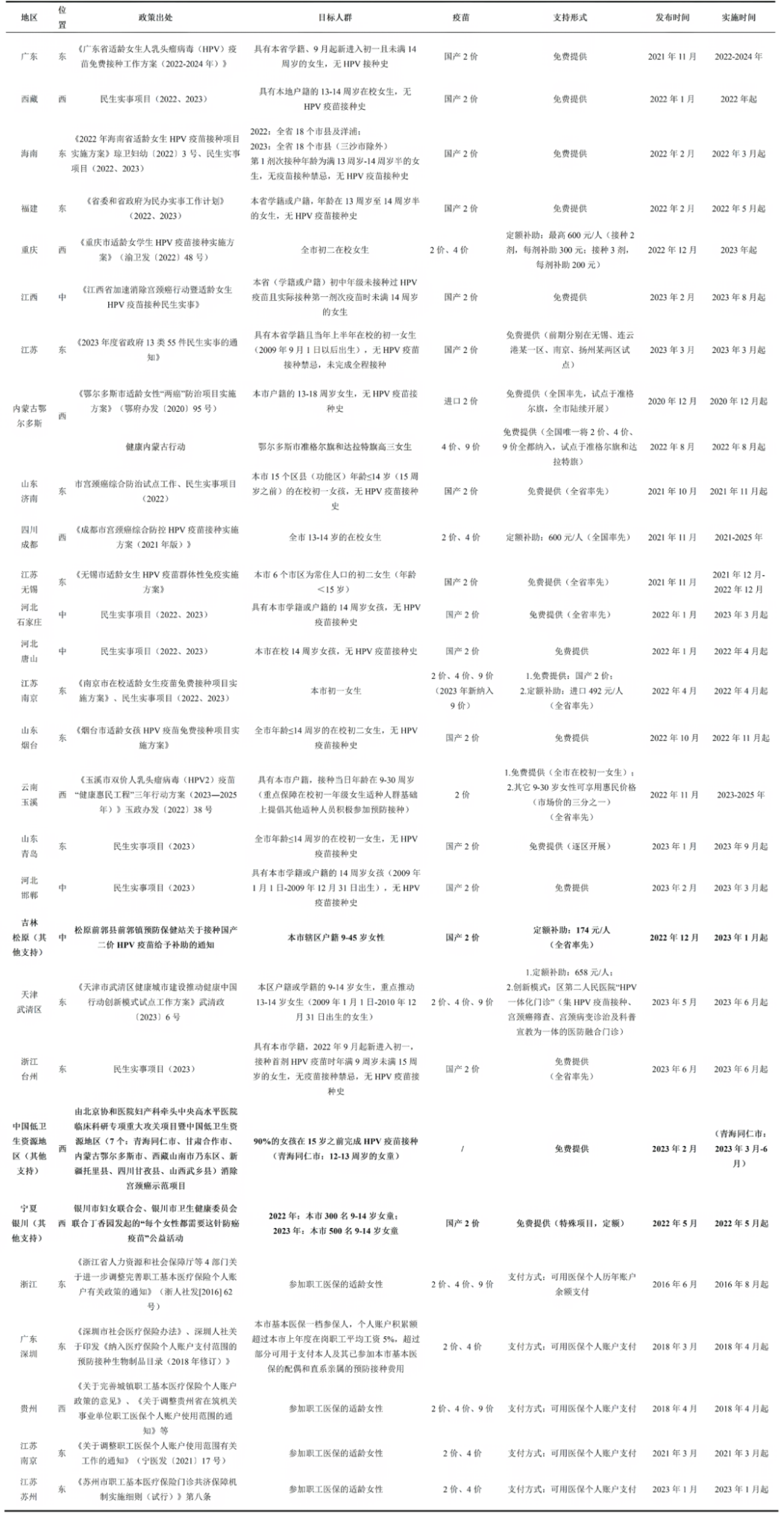Quadrivalent Vaccines: DTaP-X, MMRV
Quadrivalent vaccines developed based on the DTaP combination vaccine (DTaP-X)
Previous studies found that quadrivalent vaccines developed based on the DTaP vaccine are not inferior to the monovalent vaccine in terms of immunogenicity and safety1,2.
In 2007, researchers conducted a randomized, two-stage, parallel-controlled, single-center clinical trial in Dafeng District, Yancheng City, Jiangsu Province, to evaluate China’s first self-developed DTaP-Hib quadrivalent vaccine. A total of 720 infants and children were enrolled in the trial and randomly assigned to the two groups in a 2:1 ratio. In the first phase, 480 subjects in the intervention group received three doses of DTaP-Hib quadrivalent vaccine at 3, 4, and 5 months of age, while 240 subjects in the control group received DTaP vaccine and Hib monovalent vaccine at 3, 4, and 5 months respectively. In the second phase, 633 vaccinated toddlers (31 in the intervention group and 202 in the control group) received booster doses at 18 months. The research team collected sera samples at pre-dose 1, 4 weeks post-dose 3, pre-dose 4-, and 4-weeks post-dose 4, respectively. Results showed that seroconversion rates of anti-pertussis toxoid (PT), anti-filamentous hemagglutinin (FHA), anti-diphtheria toxoid (DT), anti-tetanus toxoid (TT), and anti-polyribosyl-ribitol-phosphate (PRP) in the intervention group were comparable to that of the control group. Nearly 100% of the subjects in both groups achieved seroprotective levels after primary and booster vaccination, with low frequency of AEFI in both groups3.
Randomized trials conducted in Sweden, Italy, and the United States using the DTaP-IPV quadrivalent vaccine revealed similar results. The DTaP-IPV quadrivalent vaccine group showed comparable results to the control group, which received the DTaP vaccine and the IPV monovalent vaccine, respectively, in terms of the seroprotection and the average level of antibodies produced against each antigen. The investigators also observed that reactogenicity between the two groups was nearly identical4,5.
Researchers from Spain conducted another trial between 1998 and 1999, in which 223 children were randomized to two groups—Group 1 was given the DTaP-Hib quadrivalent vaccine, and Group 2 was given the DTwP combination vaccine and Hib monovalent vaccine separately. The trial results showed that the DTaP-Hib vaccination group was significantly less reactogenic than Group 2, which had more localized reactions and fever reported. The evidence suggested that the quadrivalent vaccine was safer and had better reactogenicity for children 6.
Quadrivalent vaccines (MMRV) are developed based on the MMR combination vaccine.
Previous studies indicated that the immunogenicity and safety of the MMRV quadrivalent vaccine were better 7 or comparable 8,9 to receiving the MMR vaccine and monovalent varicella vaccine. A South Korean study found that only the primary objective of non-inferiority in mumps SCRs was not met10. The above studies indicated comparable AEFI in the intervention and control groups.
A trial conducted in 10 European Union countries between 2009 and 2015, enrolling more than 5,000 children, found that antibodies produced by both the MMRV vaccination group and the MMR vaccine and monovalent varicella vaccine separately given group effectively protected against varicella infection. Efficacy of two doses of MMRV against all and moderate or severe varicella was 95.0% (95% CI: 93.6–96.2) and 99.0% (95% CI: 97.7–99.6), respectively. The efficacy of one dose of varicella vaccine against all and against moderate or severe varicella was 67.0% (95% CI: 61.8–71.4) and 90.3% (95% CI: 86.9–92.8), respectively. In addition, 570 adverse events were reported in 422 children during the trial period. However, after investigation, these adverse events were confirmed unrelated to vaccination 11.
Some studies have also shown that the MMRV vaccine increases the probability of febrile convulsions 12,13 or fever during the initial vaccination period 14,15,16. A multicenter, single-blind, randomized controlled trial found that after the first dose of vaccination, 57.4% of subjects in the MMRV vaccination group developed a fever of 38°C or higher, compared with 44.5% in the MMR and varicella monovalent vaccine receiving group, and 39.8% in the MMR vaccination group17.
Pentavalent Vaccines: DTaP-IPV-Hib, DTaP-HepB-IPV
There are two types of pentavalent vaccines, one for pertussis, diphtheria, tetanus, polio, and Haemophilus influenzae type b (DTaP-IPV-Hib) and the other for pertussis, diphtheria, tetanus, polio and hepatitis B (DTaP-HepB-IPV). Previous evidence showed that receiving the two types of pentavalent vaccines has comparable antibody responses to receiving lower-valent combination vaccines and monovalent vaccines containing the same antigens 18,19,20,21. A meta-analysis that included nine clinical trial studies of pentavalent vaccines showed that monovalent vaccines produced higher levels of diphtheria and pertussis antibodies when compared with the combination vaccine receiving group. The immunogenicity levels of pertussis, Haemophilus influenzae b, polio, and hepatitis B in most of the studies were comparable between combination vaccine receivers and the monovalent vaccine receiving group 22. Studies have also reflected fewer injection site reactions in the pentavalent vaccine receiving group18,19,21. Still, studies have shown an increase in local reactions after being vaccinated with the pentavalent vaccine or a higher rate of redness after receiving the first dose of the pentavalent vaccine22.
Researchers in South Korea conducted an open-label, multicenter study in which healthy infants aged 42-69 days (1:1 randomization) received three doses of pentavalent vaccine (DTaP-IPV/Hib) at 2, 4, and 6 months or DTaP-IPV and Hib vaccines separately. The study showed no significant difference in immunogenicity of the pentavalent vaccine compared to separate vaccinations 23.
A research team from China designed a randomized, open-label clinical trial of pertussis, diphtheria, tetanus, polio, and Haemophilus influenzae type b vaccine (DTaP-IPV-Hib) with a total of 962 children enrolled. The study results were published in 2017. 984 infants were included in the TVC, and 962 completed the study. The according-to-protocol (ATP) cohort for immunogenicity included 455 infants: 147 received the DTaP-IPV/Hib vaccine at 2, 3, 4 months of age (Group A), 157 received the vaccine at 3, 4, 5 months of age (Group B), and 151 received the concomitant DTaP/Hib at 2, 3, 4 months of age (Control group). 825 infants received a booster dose of DTaP/Hib and IPV at 18–24 months. Non-inferiority of 3-dose primary vaccination with DTaP-IPV/Hib over separately administered DTaP/Hib and IPV was demonstrated for Group A. Similar antibody concentrations were observed in all groups, except for anti-polyribosyl-ribitol phosphate and anti-poliovirus types 1–3, which were higher in DTaP-IPV/Hib recipients. Protective antibody levels against all vaccine antigens remained high until booster vaccination24.
Another retrospective study using data from the China National Adverse Events after Immunization Surveillance System (CNAEFIS) showed that 516,000 doses of DTaP-IPV-Hib vaccine were administered to children in Guangzhou between 2011 and 2017. 376 cases of adverse reactions were reported. Most reported AEFIs after DTaP-IPV/Hib vaccination are not serious, with only eight serious cases25.
A multicenter trial conducted in Italy between 1998 and 1999 enrolled 360 children randomized into two groups, one receiving DTaP-Hib-HepB pentavalent vaccine and the other receiving DTaP-HepB quadrivalent vaccine and Hib monovalent vaccine separately. The investigators detected comparable seroprotective antibody concentrations against all vaccine-covered antigens. 97.0% and 99.4% of the subjects receiving single or separate injections had Hib anti-PRP antibody concentrations ≥1.0 μg/mL. The trial also demonstrated that the addition of a Hib vaccine to the DTaP-HBV vaccine did not increase the incidence of local or systemic reactions 26.
Hexavalent Vaccines: DTaP-IPV-Hib-HepB
Like the quadrivalent and pentavalent vaccines, most evidence has confirmed that the hexavalent vaccine has similar immunogenicity and safety to the lower-valent combination vaccines and monovalent vaccines containing the same antigens27,28,29,30,31.
A study of hexavalent vaccine in Slovakia showed that 10-11 years after DTaP-HBV-IPV/Hib vaccination, 48.4% maintained anti-HBs at ≥10 mIU/ml, and 58.4% of subjects vaccinated with pentavalent vaccine (DTaP-IPV/Hib) and monovalent hepatitis B vaccine (HBV) separately maintained anti-HBs at ≥10mIU/ml. DTaP-HBV-IPV/Hib-induced immune memory was similar to monovalent HBV-primed subjects, and the duration of protection may be identical for DTaP-HBV-IPV/Hib and monovalent HBV 28.
The results of an open, randomized, multicenter trial published in 2003 revealed that the probability of fever after DTaP-IPV-Hib-HepB vaccination was higher than that after DTaP-IPV/Hib pentavalent and HBV monovalent vaccines received separately (21% vs. 12%). The probability of localized pain after receiving the hexavalent vaccine was slightly higher than that of the separate vaccination group (2.5% vs. 1.2%). The study also found that the immunological response to pertussis antigens in the hexavalent vaccine receivers was more than 97%, which is higher than the 90% immunological response in the separately vaccinated group32.
Another open-label, randomized, multicenter study conducted in the U.S. evaluated the immunogenicity and safety of vaccination with DTaP-HBV-IPV-Hib hexavalent vaccine versus concomitant administration of either the DTaP-HBV-IPV pentavalent vaccine and Hib monovalent vaccine or the DTaP-IPV-Hib pentavalent and HepB monovalent vaccine. The study enrolled 585 subjects. The study demonstrated that the seroprotection/positive rates for all vaccine antigenic components were high in all three vaccination modalities: DTaP-HBV-IPV/Hib (≥ 94.8%), DTaP-HBV-IPV+ HibA (≥ 98.1%) or DTaP-IPV/Hib+ HBV (≥ 97.8%) groups. The investigators observed strong immune responses and reactogenicity in all three groups33.
Content Editor: Siqi Jin, Zhangyang Pan
Page Editor: Ziqi Liu
Reference
1 Li Yanping et al. Safety and immunogenicity of adsorbed inactivated cell-free poliovirus and Haemophilus influenzae type b (conjugate) vaccine in infants and young children in China (in Chinese). Chinese Journal of Epidemiology. 2011,32(8):808-815
2 Lee, S. Y., Hwang, H. S., Kim, J. H., Kim, H. H., Lee, H. S., Chung, E. H., Park, S. E., Ma, S. H., Chang, J. K., Guitton, F., Ortiz, E., & Kang, J. H. (2011). Immunogenicity and safety of a combined diphtheria, tetanus, acellular pertussis, and inactivated poliovirus vaccine (DTaP-IPV) compared to separate administration of standalone DTaP and IPV vaccines: a randomized, controlled study in infants in the Republic of Korea. Vaccine, 29(8), 1551 Vaccine, 29(8), 1551 -1557. https://doi.org/10.1016/j.vaccine.2010.12.094
3 Li, G., Zhang, H., Zhou, W., Ye, Q., Li, F., Wang, H., Hou, Q., Xu, Y., Ma, X., Tan, Y., Wang, L., Li, Y., Li, H., Meng, F., Liang, Q., Liu, A., Qin, C., Wei, W., Liu, J., Ruan, C., … Zhu, F. (2010). Liu, J., Ruan, C., … Zhu, F. (2010). Safety and immunogenicity of a diphtheria, tetanus, acellular pertussis and Haemophilus influenzae Type b combination vaccine compared with separate administration of licensed equivalent vaccines in Chinese infants and toddlers for primary and booster immunization. Vaccine, 28(25), 4215 -4223. -4223. https://doi.org/10.1016/j.vaccine.2010.03.061
4 Nilsson, L., Faldella, G., Jacquet, J. M., Storsaeter, J., Silfverdal, S. A., & Ekholm, L. (2005). A fourth dose of DTPa-IPV vaccine given to 4-6-year-old children in Italy and Sweden following primary vaccination at 3, 5 and 11-12 months Scandinavian journal of infectious diseases, 37(3), 221-229. https://doi.org/10.1080/00365540410020884
5 Black, S., Friedland, L. R., Ensor, K., Weston, W. M., Howe, B., & Klein, N. P. (2008). Diphtheria-tetanus-acellular pertussis and inactivated poliovirus vaccines given separately or combined for booster dosing at 4-6 years of age. the Pediatric infectious disease journal, 27(4), 341-346. https://doi.org/10.1097/INF.0b013e3181616180
6 Arístegui, J., García-Corbeira, P., de la Flor, J. et al. Reactogenicity and Safety of DTPa Vaccine and Haemophilus influenzae Type b Conjugate Vaccine (Hib) in a Single Injection vs DTPw and Hib as Separate Injections as a Booster Vaccination in 18-Month-Old Children. Clin. Drug Investig. 21, 9-16 (2001). Drug Investig. 21, 9 -16 (2001). https://doi.org/10.2165/00044011-200121010-00002
7 Knuf, M., Zepp, F., Helm, K., Maurer, H., Prieler, A., Kieninger-Baum, D., Douha, M., & Willems, P. (2012). Antibody persistence for 3 years following two doses of tetravalent measles-mumps-rubella-varicella vaccine in healthy children. European journal of pediatrics, 171(3), 463-470. https://doi.org/10.1007/s00431-011-1569-4
8 Gillet, Y., Steri, G. C., Behre, U., Arsène, J. P., Lanse, X., Helm, K., Esposito, S., Meister, N., Desole, M. G., Douha, M., & Willems, P. (2009). Immunogenicity and safety of measles-mumps-rubella-varicella (MMRV) vaccine followed by one dose of varicella vaccine in children aged 15 months-2 years or 2-6 years primed with varicella. years or 2-6 years primed with measles-mumps-rubella (MMR) vaccine. Vaccine, 27(3), 446-453. https://doi.org/10.1016/j. vaccine.2008.10.064
9 Lalwani, S., Chatterjee, S., Balasubramanian, S., Bavdekar, A., Mehta, S., Datta, S., Povey, M., & Henry, O. (2015). Immunogenicity and safety of early vaccination with two doses of a combined measles-mumps-rubella-varicella vaccine in healthy Indian children from 9 months of age: a phase III, randomized, non-inferiority trial. bmj open, 5(9), e007202. https://doi.org/10.1136/bmjopen-2014-007202
10 Cha, S. H., Shin, S. H., Lee, T. J., Kim, C. H., Povey, M., Kim, H. M., & Nicholson, O. (2014). Immunogenicity and safety of a tetravalent measles-mumps-rubella-varicella vaccine: an open-labeled, randomized trial in healthy Korean children. Clinical and experimental vaccine research, 3(1), 91-99. https://doi.org/10.7774/cevr.2014.3.1.91
11 Henry, O., Brzostek, J., Czajka, H., Leviniene, G., Reshetko, O., Gasparini, R., Pazdiora, P., Plesca, D., Desole, M. G., Kevalas, R., Gabutti, G.,. Povey, M., & Innis, B. (2018). One or two doses of live varicella virus-containing vaccines: efficacy, persistence of immune responses, and safety six years after administration in healthy children during their second year of life. Vaccine, 36(3), 381-387. https://doi.org/10.1016/j.vaccine.2017.11.081
12 Cocchio, S., Zanoni, G., Opri, R., Russo, F., Baldo, V., & Collaborative group (2016). A postmarket safety comparison of 2 vaccination strategies for measles, mumps, rubella and varicella in Italy. human vaccines & immunotherapeutics, 12(3), 651-654. https://doi.org/10.1080/21645515.2015.1101198
13 Schink, T., Holstiege, J., Kowalzik, F., Zepp, F., & Garbe, E. (2014). Risk of febrile convulsions after MMRV vaccination in comparison to MMR or MMR+V vaccination. Vaccine, 32(6), 645-650. https://doi.org/ 10.1016/j.vaccine.2013.12.011
14 Goh, P., Lim, F. S., Han, H. H., & Willems, P. (2007). Safety and immunogenicity of early vaccination with two doses of tetravalent measles-mumps-rubella-varicella (MMRV) vaccine in healthy children from 9 months of age. Infection, 35(5), 326-333. https://doi.org/10.1007/s15010-007-6337-z
15 Lieberman, J. M., Williams, W. R., Miller, J. M., Black, S., Shinefield, H., Henderson, F., Marchant, C. D., Werzberger, A., Halperin, S., Hartzel, J.. Klopfer, S., Schödel, F., Kuter, B. J., & Consistency Lot Study Group for ProQuad (2006). The safety and immunogenicity of a quadrivalent measles, mumps, rubella and varicella vaccine in healthy children: a study of manufacturing consistency and persistence of antibody. The Pediatric infectious disease journal, 25(7), 615-622. https://doi.org/10.1097/01. inf.0000220209.35074.0b
16 Knuf, M., Habermehl, P., Zepp, F., Mannhardt, W., Kuttnig, M., Muttonen, P., Prieler, A., Maurer, H., Bisanz, H., Tornieporth, N., Descamps, D., & Willems, P. (2006). Immunogenicity and safety of two doses of tetravalent measles-mumps-rubella-varicella vaccine in healthy children. the pediatric infectious disease journal, 25(1), 12-18. https://doi.org/10.1097/01.inf.0000195626.35239.58
17 Prymula, R., Bergsaker, M. R., Esposito, S., Gothefors, L., Man, S., Snegova, N., Štefkovičova, M., Usonis, V., Wysocki, J., Douha, M., Vassilev, V.,. Nicholson, O., Innis, B. L., & Willems, P. (2014). Protection against varicella with two doses of combined measles-mumps-rubella-varicella vaccine versus one dose of monovalent varicella vaccine: a multicentre, observer-blind, randomised, controlled trial. Lancet (London, England), 383(9925), 1313-1324. https://doi.org/ 10.1016/s0140-6736(12)61461-5
18 Kang, J. H., Lee, H. J., Kim, K. H., Oh, S. H., Cha, S. H., Lee, J., Kim, N. H., Eun, B. W., Kim, C. H., Hong, Y. J., Kim, H. H., Lee, K. Y., Kim, Y. J., Cho, E. Y., Kim , H. S., Guitton, F., & Ortiz, E. (2016). The Immunogenicity and Safety of a Combined DTaP-IPV//Hib Vaccine Compared with Individual DTaP-IPV and Hib (PRP~T) Vaccines: a Randomized Clinical Trial in South Korean Infants. Journal of Korean medical science, 31(9), 1383-1391. https://doi.org/10.3346/jkms.2016.31.9.1383
19 Kitchin, N., Southern, J., Morris, R., Hemme, F., Cartwright, K., Watson, M., & Miller, E. (2006). A randomized controlled study of the reactogenicity of an acellular pertussis-containing pentavalent infant vaccine compared to a quadrivalent whole cell pertussis-containing vaccine and oral poliomyelitis vaccine, when given concurrently with meningococcal group C conjugate vaccine to healthy UK infants at 2, 3 and 4 months of age. Vaccine, 24(18), 3964-3970. https://doi.org/10.1016/j.vaccine.2006.02.018
20 Halperin, S. A., King, J., Law, B., Mills, E., & Willems, P. (1999). Safety and immunogenicity of Haemophilus influenzae-tetanus toxoid conjugate vaccine given separately or in combination with a three-component acellular pertussis vaccine combined with diphtheria and tetanus toxoids and inactivated poliovirus vaccine for the first four doses. Clinical infectious diseases: an official publication of the Infectious Diseases Society of America, 28(5), 995-1001. https://doi.org/10.1086 /.
21 Guerra, F. A., Blatter, M. M., Greenberg, D. P., Pichichero, M., Noriega, F. R., & Pentacel Study Group (2009). Safety and immunogenicity of a pentavalent vaccine compared with separate administration of licensed equivalent vaccines in US infants and toddlers and persistence of antibodies before a preschool booster dose: a randomized, clinical trial. Pediatrics, 123(1), 301-312. https://doi. Pediatrics, 123(1), 301-312. . org/10.1542/peds.2007-3317
22 Merchant, N., & Waldrop, J. (2012). The safety advantages of pentavalent vaccines. the Nurse practitioner, 37(4), 48-53. https://doi.org/10.1097/01.NPR.0000412895. 12310.9d
23 Kim, K. H., Kim, C. S., Kim, H. M., Kim, J. D., Ma, S. H., Kim, D. H., Hwang, P. H., Han, J. W., Lee, T. J., Kim, J. H., Karkada, N., Mesaros, N., Sohn, W. Y., & Kim, J. H. (2019). Immunogenicity and safety of a combined DTPa-IPV/Hib vaccine administered as a three-dose primary vaccination course in healthy Korean infants: phase III, randomized study. human vaccines & immunotherapeutics, 15(2), 317-326. https://doi.org/10.1080/21645515.2018.1536588
24 Li, Y., Li, R. C., Ye, Q., Li, C., Liu, Y. P., Ma, X., Li, Y., Zhao, H., Chen, X., Assudani, D., Karkada, N., Han, H. H., Van Der Meeren, O., & Mesaros, N. ( 2017). Safety, immunogenicity and persistence of immune response to the combined diphtheria, tetanus, acellular pertussis, poliovirus and Haemophilus influenzae type b conjugate vaccine (DTPa-IPV/Hib) administered in Chinese infants. human vaccines & immunotherapeutics, 13(3), 588 -https://doi.org/10.1080/21645515.2016.1239670
25 Li, Z., Xu, J., Tan, H., Zhang, C., Chen, J., Ni, L., Yun, X., Huang, Y., & Wang, W. (2020). Safety of pentavalent DTaP-IPV/Hib combination vaccine in post-marketing surveillance in Guangzhou, China, from 2011 to 2017. international journal of infectious diseases: IJID: official publication of the International Society for Infectious Diseases, 99, 149-155. https://doi.org /10.1016/j.ijid.2020.07.019
26 Gabutti, G., Bona, G., Dentico, P., Bamfi, F., Hardt, K., Majori, S., Crovari, P., & Cooperative Group for the Study of Combined Vaccines* (2005). Immunogenicity and Reactogenicity following Primary Immunization with a Combined DTaP-HBV Vaccine and a Haemophilus influenzae Type B Vaccine Administered by Separate or Mixed Injection. Clinical drug investigation, 25(5), 315-323. https://doi.org/10.2165/00044011- 200525050-00004
27 Zepp, F., Knuf, M., Heininger, U., Jahn, K., Collard, A., Habermehl, P., Schuerman, L., & Sänger, R. (2004). Safety, reactogenicity and immunogenicity of a combined hexavalent tetanus, diphtheria, acellular pertussis, hepatitis B, inactivated poliovirus vaccine and Haemophilus influenzae type b conjugate vaccine, for primary immunization of infants. Vaccine, 22(17-18), 2226-2233. https ://doi.org/10.1016/j.vaccine.2003.11.044
28 Avdicova, M., Crasta, P. D., Hardt, K., & Kovac, M. (2015). Lasting immune memory against hepatitis B following challenge 10-11 years after primary vaccination with either three doses of hexavalent DTPa-HBV- IPV/Hib or monovalent hepatitis B vaccine at 3, 5 and 11-12 months of age. Vaccine, 33(23), 2727-2733. https://doi.org/10.1016/j. vaccine.2014.06.070
29 Lim, F. S., Han, H. H., Jacquet, J. M., & Bock, H. L. (2007). Primary vaccination of infants against hepatitis B can be completed using a combined hexavalent diphtheria-tetanus-acellular pertussis-hepatitis B -Inactivated poliomyelitis-Haemophilus influenzae type B vaccine. Annals of the Academy of Medicine, Singapore, 36(10), 801-806.
30 Cheng, H. K., Rajadurai, V. S., Amin, Z., Sriram, B., Yee, M. F., Han, H. H., Bock, H. L., & Safary, A. (2004). Immunogenicity and reactogenicity of two regimens of diphtheria-tetanus-acellular pertussis-hepatitis B-inactivated polio and Haemophilus influenzae type b vaccines administered to infants primed at birth with hepatitis B vaccine. the Southeast Asian journal of tropical medicine and public health, 35(3), 685-692.
31 Avdicová, M., Prikazský, V., Hudecková, H., Schuerman, L., & Willems, P. (2002). Immunogenicity and reactogenicity of a novel hexavalent DTPa-HBV-IPV/Hib vaccine compared to separate concomitant injections of DTPa-IPV/Hib and HBV vaccines, when administered according to a 3-, 5- and 11-month vaccination schedule. European journal of pediatrics, 161(11), 581- 587. 587. https://doi.org/10.1007/s00431-002-1079-5
32 Arístegui, J., Dal-Ré, R., Díez-Delgado, J., Marés, J., Casanovas, J. M., García-Corbeira, P., De Frutos, E., Van Esso, D., Verdaguer, J., De la Flor, J ., Moraga, F., Boceta, R., & García-Martínez, J. A. (2003). Comparison of the reactogenicity and immunogenicity of a combined diphtheria, tetanus, acellular pertussis, hepatitis B, inactivated polio (DTPa- HBV-IPV) vaccine, mixed with the Haemophilus influenzae type b (Hib) conjugate vaccine and administered as a single injection, with the DTPa-IPV/Hib and hepatitis B vaccines administered in a single injection. and hepatitis B vaccines administered in two simultaneous injections to infants at 2, 4 and 6 months of age. Vaccine, 21(25-26), 3593-3600. https://doi.org/10.1016/s0264-410x(03)00420-1
33 Klein, N. P., Abu-Elyazeed, R., Cheuvart, B., Janssens, W., & Mesaros, N. (2019). Immunogenicity and safety following primary and booster vaccination with a hexavalent diphtheria, tetanus, acellular pertussis, hepatitis B inactivated poliovirus and Haemophilus influenzae type b vaccine: a randomized trial in the United States. human vaccines & immunotherapeutics. 15(4), 809-821. https://doi.org/10.1080/21645515.2018.1549449





